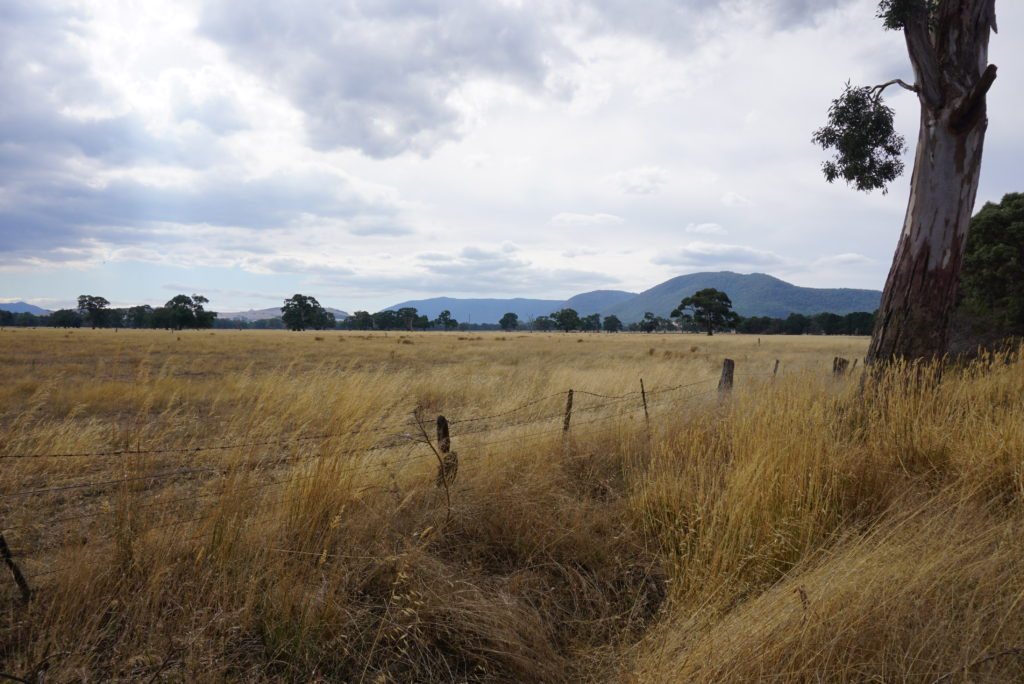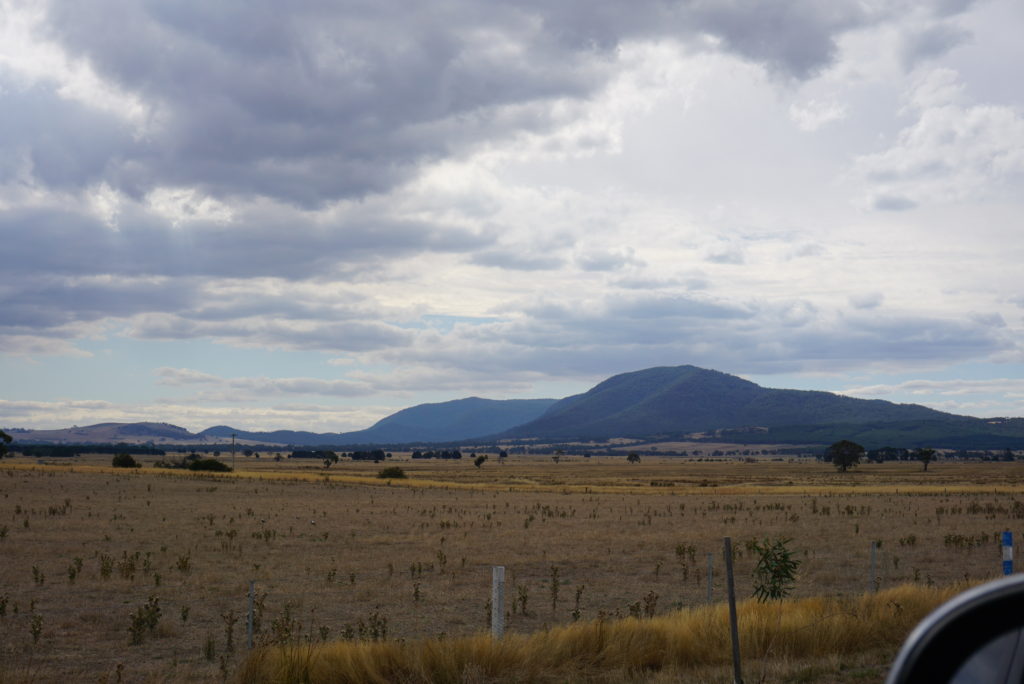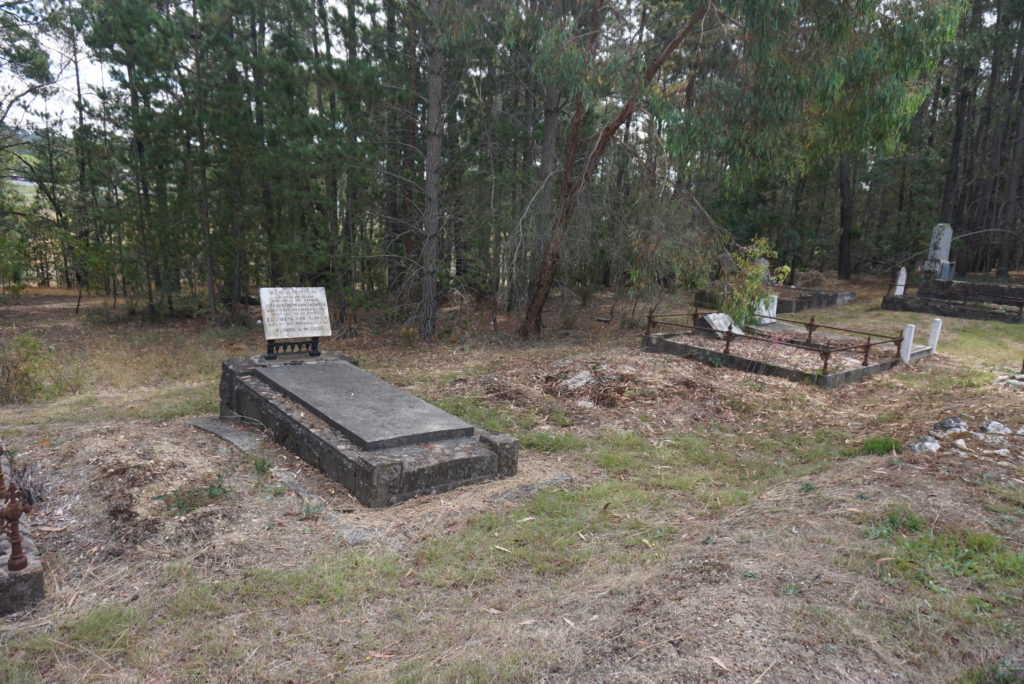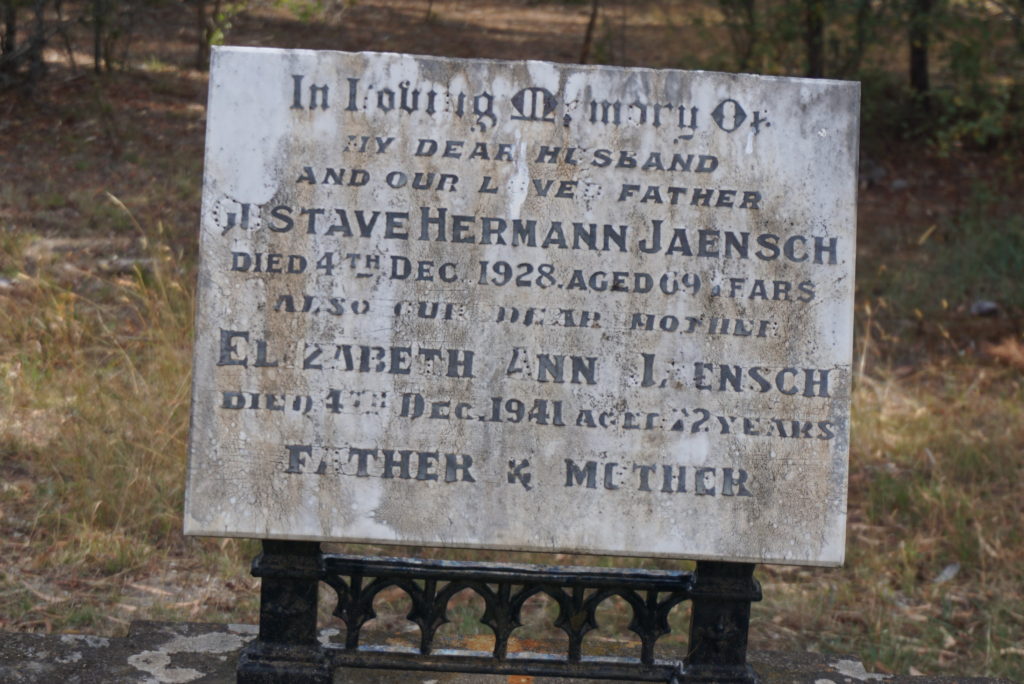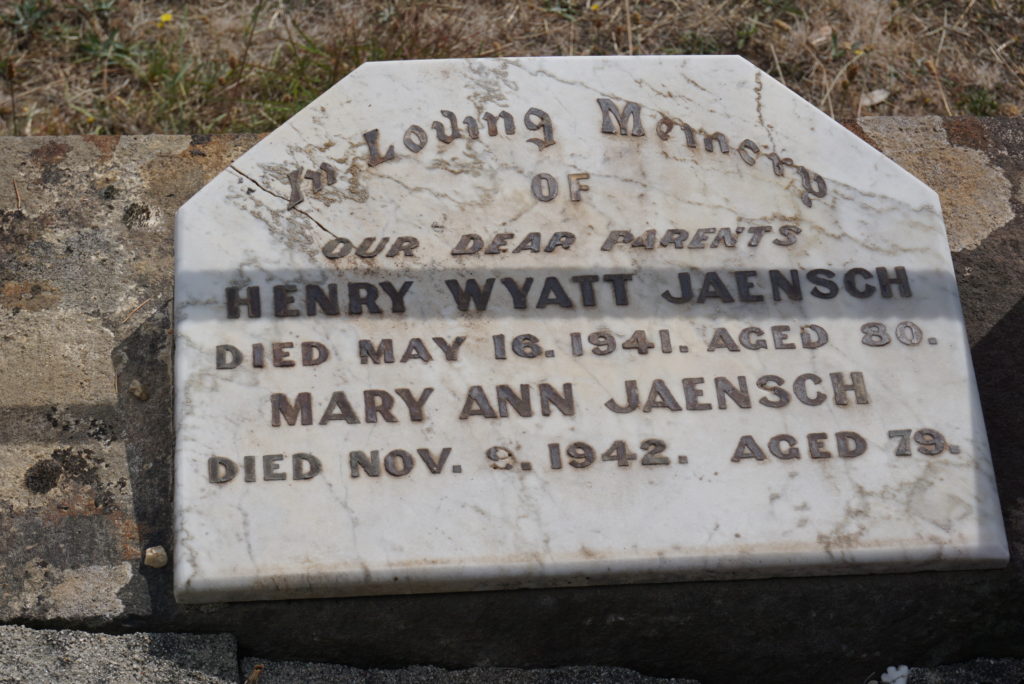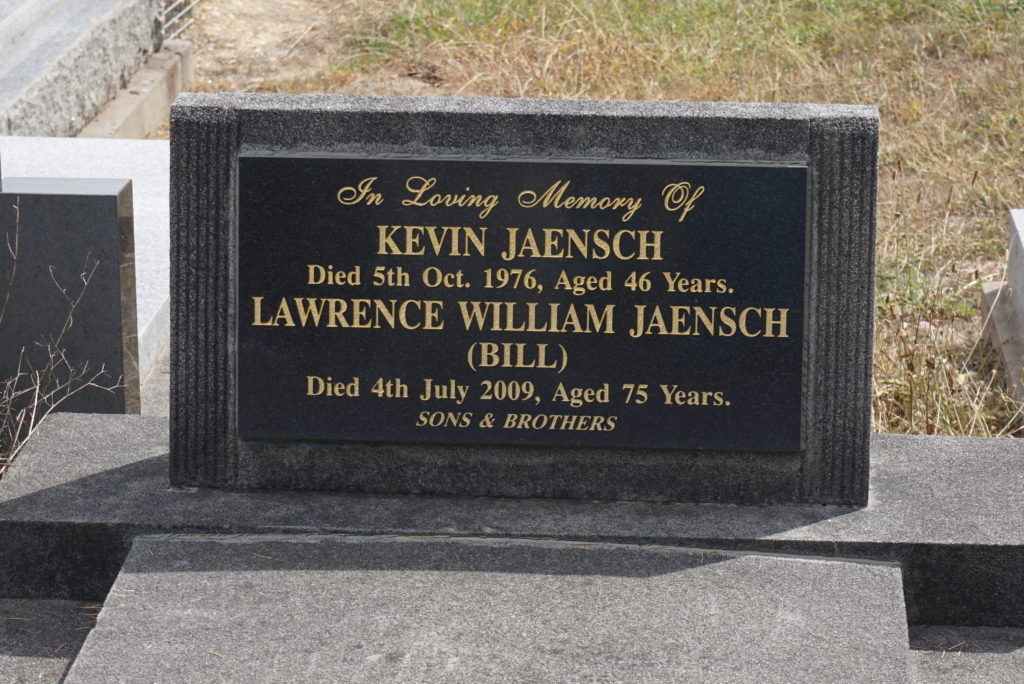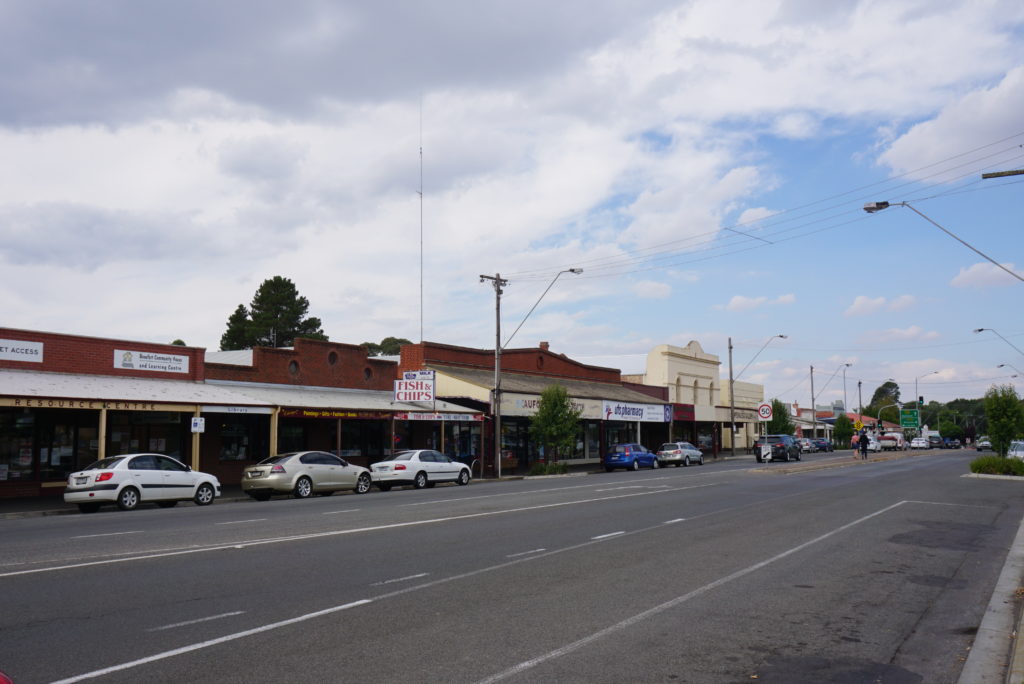The Jaensch family name was in the background of our contemporary information by being linked to an apparent name change in our history. So here goes with what we have found in our searches.
LUTHERAN REFUGEE GETS A BAD START IN NEW ZEALAND
Our story starts with Charles Jaensch, a German from a village called Posen. Unfortunately, the evidence trail to his parents is confused through mis-information and the difficulties of searching. It is believed that his father may have been Paul Jaensch, but this is not at all certain and there is more work to do in this area.
Charles Ferdinand Robert Jaensch was born in 1817 in Posen, which at the time was in the district (Kreis) of Salle Holzland, Theuringia, in the German Confederation. Theuringia was a State in the Confederation but that comprised of eight other smaller ‘states’ or ‘duchies’. The Napoleonic War finished in 1815 and this region experienced a period of considerable depression for both farmers and returning soldiers well into the 1840’s. The region was an agricultural area noted for its farmland and open plains and recognized for sheep herding. In 1834 Theuringa joined the economic German Custom’s Union, which immediately created issues for farmers through the exploitation of cheap foreign imports. There were many riots across the Confederation because of this and made worse by famines and religious reforms. In 1830, under the German King Frederick Wilhelm III, the introduction of enforced religious union in Germany, was the straw that broke the camels back and caused significant emigration of Lutherans to America, Australia and New Zealand.
It appears that Charles, aged 24, was a Lutheran, and emigrated in December 1842 from Hamburg on the three master, 380ton rigger, ‘St Pauli’, along with with 140 other like thinking Germans, including two Lutheran missionaries, intending to settle in New Zealand. Charles and his friends had purchased for £300 titles to 150 acres of land, from the New Zealand Company, through an agent Captain John Beit.
On route the ‘St Pauli‘ was held up for over 3 weeks in Bahia, now the city of Salvador, Brazil, due to a small-pox outbreak, with four children dying. The ship eventually arrived in Nelson on the 14th June 1843 and the settlers first moved to land close to a Lutheran settlement at Moutere, which they named St Paulidorf, after the ship. This was not, however, the land Charles had purchased, as, while they were at sea the New Zealand Co. went into administration and, for Charles and his friends, all was lost. As a final ‘let down’, the St Paulidorf land, owned by the Lutheran Church, suffered considerable flooding that year, ruining all the buildings that had just been constructed. By spring 1844 a number of the German settlers, including Charles had had enough and decided to leave, making their way to Nelson and then catching a ship to the south coast of the NSW Colony, which landed them at Portland in late 1844.
A NEW BEGINNING IN THE COLONY OF NSW
Portland was a southern coastal town, 180km west of Geelong, and established around 1838, following settlement in the area being formalised. It was an important port because large sheep runs were developing north and north-west of Portland and the wool needed a ready export outlet. This was before the gold finds so the most likely occupation for Charles on landing was agricultural labouring or, as it eventuated, shepherding. He appears to have worked his way to more northern districts because at some point between 1844 and 1852 Charles Robert Jaensch, when he was 35 years old, married a 20 year old English woman named Elizabeth Wyatt. They were married in 1852 at Woardy Yalloak by a church minister, whose region of coverage or parish he called “Colac”. Woardy (or Wordy) Yalloak in 1852 was basically a settlement on a river close to a number of squatter sheep-runs, in particular the Emu Hill run. Emu Hills was 39km south-west of Ballarat and owned by the Scottish Linton family. It comprised of 15000 acres with 8000 sheep. It seems quite likely that Elizabeth was actually working in domestic service for the Linton’s or one of the other squatter families when Charles Robert, who was probably working as a shepherd in the immediate area, first met her.
Over the next four years Charles and Elizabeth made their way, as a shepherd’s family, through the western districts of the new colony of Victoria. Their first child, Hannah Paulina, was born in 1856 at Portland. It is quite possible that Charles and Elizabeth were even in Portland related to their work for the squatters of Emu Hill. They certainly developed their involvement with sheep and shepherding, because over the next decade they worked throughout the sheep growing districts. We know this because their next child and eldest son Gustave was born in 1859 at ‘East Strathdownie’, a squatter’s sheep run of 39,000 acres some 80km NW of Portland, close to what is now the State border with South Australia. Then, second son Henry was born on the ‘Argyle’ sheep run in 1861 and third son Robert was born in 1863 on ‘Tulloch’, another sheep run in that same western district. These sheep-runs had been established by various squatters, had changed ownership several times, but in the period of interest to us, 1856 to 1865, were open, unfenced grass plains, where shepherds were required to manage thousands of sheep. For example, in 1877 there were 22000 sheep estimated to be on ‘East Strathdownie’. To complete this phase of the Charles and Elizabeth Jaensch story, we know that fourth son Paul was born on the ‘Dundas’ sheep run in 1865. This run was some 150km north-east and back east towards the then township of Hamilton.
SHEPHERD TO LAND OWNER
The records held by the Strathdownie Historical Society show Charles and Elizabeth as a family working on the sheep run with Charles as a shepherd. Shepherds were important to the squatters as they looked after a set part of the ‘run’ and several thousand sheep. It is important to note for this story, that shepherding started to cease on the runs between 1865 and 1870, following the fencing of the runs. This is the same period in which the Jaensch family moved further east again, to Eurambeen, sometime soon after 1865, where sons John b1868, James b1870, Charles b1872, Edgar b1875, he died at 2 years in 1877, and Louis b1878, were all born.
It was reported in the Ballarat Star, July 5th, 1865, that Charles and Elizabeth Jaensch successfully bid for a ‘selection’ of land at Eurambeen, about 45km West of Ballarat and close to the town of Beaufort, which incidentally is back in the region of the Emu Hill run, that they had worked on in 1852.
The Ballarat Star noted that the land selection auction for the Eurambeen district took place that day at Beaufort, with 5000 persons said to be in attendance. Land prices at that time were expected up to £20 an acre at the auction but the lots were 40 acres minimum, which probably meant you had to be an existing squatter with a sheep-run or a successful ‘gold digger’ miner to acquire a selection. The Ballarat Star reporter believed the auction to be a ‘farce’, manipulated by squatters to their benefit, using dummy bidders, and unlikely to achieve a free and fair outcome. However, on the morning of 6th July 1865 some 35 applicants were successful in obtaining land parcels within the Eurambeen and Trawalla districts. One of these lucky selectors was Charles and Elizabeth Jaensch. It is possible, of course, that they were assisted in getting a selection by their close association with the squatter owners, as shepherds. More research on this subject maybe.
From 1867 to, at least, 1878, Charles, or Robert as he preferred by then, and Elizabeth, were paying rates and farming land (lots 30c and 92a) of 100 acres at Eurambeen, in the shire of Raglan and Rippon, and in 1873 had increased this holding to 180 acres. Charles and Elizabeth’s house was also built on the earlier land block. The land would have been mainly used for pasturing sheep or cattle.
To continue our story of Charles Robert and Elizabeth. They farmed the Eurambeen land selection, shown above, for many years and until they retired to live in the township of Beaufort. Charles died in Beaufort in May 1911, at 94 years, and Elizabeth died at 86 years in March 1918, also at Beaufort, although living at the time with son Gustave and his family.
An amazing and hard life on the frontier of the new colony of Victoria for both of them. The above grave plot at the Beaufort cemetery is that of Gustave (their son), with headstone, and Charles-Elizabeth’s grave the plot immediately to the right facing, with a grey rock showing.
The obituary for Elizabeth was carried in the Ballarat Times and noted that she and Charles were pioneers in the district having selected land some 53years earlier.
RAILWAYS REPLACE GOLD FOR MANY LOOKING FOR EMPLOYMENT
So, what do we know about these children of Charles and Elizabeth and how do they add to our story. Firstly, none of the children appear to have taken up farming. The eldest daughter, Hannah Paulina born in Portland, married Charles Broadbent b1858 from Raglan, a hamlet adjoining Eurambeen, and they had eight children. The children were William H b1878, Edward C b1879, Alice M b1882, Robert Henry b1884, Edith A b1887, Thomas E b1889, Elsie A b1891 and Myra P b1891. The children were born either at Raglan or Waterloo, another adjoining hamlet to Eurambeen. Hannah died in 1937 and Charles Broadbent in 1909, still living in the Ballarat area.
Charles and Elizabeth’s eldest son Gustave married Elizabeth Ann McKinnon of Beaufort. They had five children, four girls one boy. The children were Mary A b1891, Violet E b1893, Robert H b1894, Alma E b1895 and Nellie M b1903. Gustave was a railway worker all his life and died at Beaufort in 1928 and is buried with Elizabeth (1941) in the local cemetery (see below).
Son Henry became a miner living in Beaufort until he married, in 1887, Mary Ann Brierley; when they then moved to Trawalla, a close by hamlet. The children that we are aware of are: Alice b1900, Effie b1902, Francis b1906 and Mary Eileen b1908. In 1909 when the first electoral roll appears, Henry is still mining but Mary Ann has taken up proprietorship of a local hotel in Trawalla. They both continue in these occupations from Trawalla until 1919, when they move to Stawell, where they take over the National Hotel, helped by daughter Mary Eileen. In 1925 the couple move from Stawell and return to Beaufort to run the Camp Hotel. In 1931 they both finally retire and move to Campbell St, Ararat. Henry died at Ararat in 1941 and Mary Ann in 1942.
Son Robert was a railway employee for most of his life, as well. He married Mary Ann and they lived at Gainsborough St, Castlemaine for all of their life, except for a short spell at Yapeen in 1914. They had two or three daughters, that we can identify, and they were Gladys May, Dulcie Ida and Ina Muriel. Robert died at Castlemaine in 1935, aged 71 years.
Son Paul Albert married Mary Ann Finch b1865, daughter of Alfred Finch and Charlotte Escott, in1887 and they had five children, Earnest Arthur b1889, Eva May b 1891, Edgar Charles b1894, Ivy b1895, and Elsie Maud b 1896. Paul worked on the railway for most of his life and was stationed at various Victorian towns, mainly as an engine driver. From 1903 to 1914 they lived in Seymour, then moved to Maryborough, Port Fairy, Warragul and then returned to Eurambeen, before retiring, in 1931, to Bentleigh in Melbourne. In 1947 Paul and Mary celebrated their diamond wedding anniversary with family and friends at Bentleigh, where it was reported in the Argus of June 9th that they had 22 grand-children and 21 great grand-children. Paul died in 1954 and was buried at Seymour with Mary.
Son John Otto was also a railway employee all his life. He married Henrietta and they had one daughter Elsa Fauna Valentine. They lived at 218 Franklin St, 222 Battman St and 389 Victoria St, Melbourne before John died in 1924, aged 56 years. Henrietta was still living at this last Victoria St address in 1943. We believe she died around this time.
Son James Alwyn was a miner and lived at Beaufort all his life with wife Janet. They had several children, including Alwyn Clyde and Elizabeth Ann, who we can identify. James died in 1940 at Beaufort.
Son Charles tried something different to his brothers. In 1909 he was married to Florence Smith and manager of a grocery store in Prahran, Melbourne. By 1914 he had decided to branch out on his own and had opened another grocery store in Northcote, which he maintained until 1922. In that year the couple moved to Sandringham, again running their own grocery store there, but reasonably quickly, in 1924, opened a shop in Sassafras Rd, Ferny Creek. Charles and Florence had two children, Alexander Karl and Elma Elizabeth and both were living with their parents at Ferny Creek. From here they branched out again and took over the general store in Main St, Belgrave, in 1931, which they ran until 1936. Around 1934 the family had moved to live in Tecoma, an adjoining village. By this time, Charles was 64 years and looking for some retirement and the shop was sold. Their adult children were still living with them at Tecoma. In particular, son Alexander used the Glenfern Rd address as the registered address of a company called ‘Tecoma Picture Exhibitors’, which is another interesting story, reported below. Charles died in 1940 at 70 years and Alexander and his mother moved into a house in Mahoney St, Upwey. Florence died in 1954. That interesting piece of Alexander’s life is worth reporting.
AN INTEREST IN FILM CREATES A PERMANENT HISTORICAL MARKER
Alexander had trained as an industrial chemist and may well have worked in this field. However, he had a passion for ‘film’ and at some point in the early 1920’s set himself up as a travelling ‘picture show man’, exhibiting silent films in tents and local halls. He continued this activity around the Dandenong Hills region after the family moved to Ferny Creek. This activity must have been pretty successful because in 1934 Alexander commissioned architects to build a cinema in Belgrave and registered ‘Tecoma Picture Exhibitors’ as his company. The cinema he named the ‘Cameo’ and which is still operating today (2021). Alexander continued to own and manage this Cameo cinema until 1961, when it was closed. Cousin Alexander continued living in Upwey until he eventually moved to Point Lonsdale in the 1970’s. The full history of the Cameo is on line at ‘Cameo Cinema’s History’. All of our family have been entertained at the Cameo from the early 1970’s. We never met cousin Alexander.
The Jaensch family maintained a long contact with the Beaufort district and there are several Jaensch burials at the Beaufort Cemetery.
BEAUFORT DRAPER AND A NAME CHANGE
Our family ancestors Charles and Elizabeth’s youngest son Louis Arthur Jaensch b1878 at Eurambeen, will continue our family line. Louis married Amelia Day b1875 from Beaufort, Victoria in 1899. We know, from electoral rolls, that between 1901 and 1914 Louis was a draper in a Beaufort retail store.
Around 1916 Louis and Amelia seem to have decided, probably because the Beaufort business had closed and Louis could find no other work, because of the impact of the war, to move the family to Melbourne. Louis and Amelia had ten children, all, born at Beaufort or Raglan, an adjoining township, and where some of them were attending school. The children were Joyce b1898, Mervyn J b1899, Stanley A b1901, Edna Doris b1904, Rex Oswald b1905, Ivan b1907, Maxwell L b1910, Frederick D b1912, Lyla Amelia b1914, and Thelma Lilian b1916.
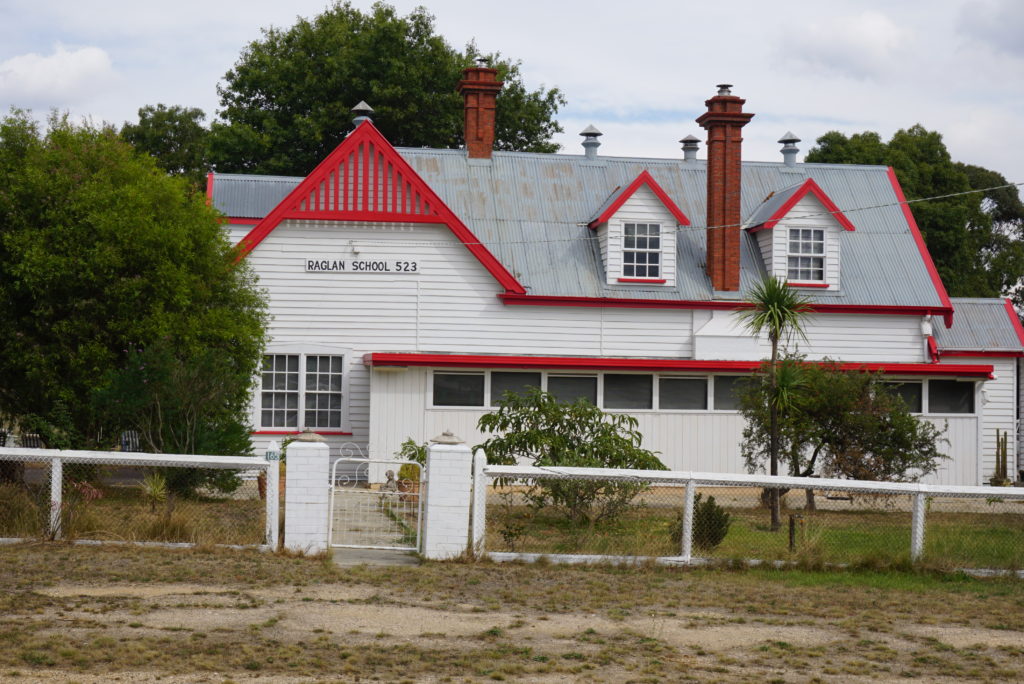
Raglan State School
All the children were born with the name Jaensch but shortly after the start of WW1, in about 1916, and probably at the time the family moved to Footscray in Melbourne, Louis and Amelia decided to change the family name from the German Jaensch to the English family name Wyatt, of Louis’ mother Elisabeth’s family. They almost certainly did this because of the anti-German feeling that was rapidly building in Australia at the time. Prior to 1914, Germans were being interned throughout Australia, as ‘enemy aliens’. Several of the other Jaensch boys, however, stayed in the Beaufort area and retained the Jaensch name. Son Henry alone referred to himself as Wyatt-Jaensch. Our family headed by Louis seems to have felt that a name and address change was a positive step and from 1916 onwards all the family referred to themselves as Wyatt. Louis re-established himself as a draper in Melbourne, an occupation he continued until his death in 1935.
Before we continue with our direct family line let us look briefly at the stories of some of Louis and Amelia’s children. Mervyn John Ferdinand Wyatt married Ester Selina Dickman of Beaufort and they had two children, Garth and Trevor Wyatt. Mervyn started his working career as an office clerk and became a warehouseman in the 1950’s, which he retained until his retirement. Mervyn and Selina lived at Rennie St, Thornbury throughout their lives. Selina died in the 1960’s and Mervyn in the 1980’s. Youngest daughter Thelma Lillian Wyatt married Holman Lindsay Williams of Beaufort, whose mother was Annie Dickman, the mother of Selina Dickman. Thelma and Holman had one child Adrian. Holman was the Town Clerk for Springvale 1955 to 1977. To confuse things even further Thelma’s cousin Jack married Holman’s sister Alma.
Stanley Arthur Wyatt married Ivy Margaret Bonelli of Maldon.
We have no information about Rex Oswald Wyatt.
Continuing with our family line; Louis’ and Amelia’s second daughter, Edna Doris Jaensch, was born at Beaufort in 1904 and she continues our family line. Edna Doris Wyatt moved to Melbourne with the family and as we have said changed their name to Wyatt. So, it was Edna Doris Wyatt who married George Forrest Rowe at Strathfieldsaye, in 1927, and we will follow her story as Edna Doris Rowe. Rhonnie’s Grandmother.
